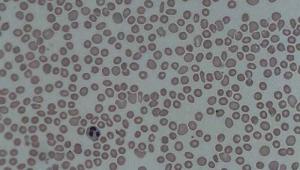Appendicitis: symptoms, treatment and psychological care
Appendicitis is one of the most common reasons for surgery among young people. It is an inflammation that, if not treated in time, can lead to death, which requires urgent medical intervention.
Next we will see the symptoms, causes and treatment of appendicitis, as well as its general characteristics and the approach with which the psychological accompaniment is carried out.
- You may be interested in: "Celiac symptoms: what are they and how are they managed?"
What is appendicitis?
Appendicitis is a type of infection that appears in the appendix, an area of the large intestine located in what is known as the “cecum”, which is the end where it communicates with the small intestine. It is a small elongated chamber with a single entrance in the shape of a deflated balloon.
It is a part of the digestive system that, despite not being important to maintain a correct level of health, can become infected relatively easily.
Causes of this infection
Appendicitis infection usually occurs when a set of feces remains clogging the appendix and blocks it for a long time. However, it is also possible that the problem originates from a tumor in the area, worms that parasitize the intestines, or even trauma that affects that section of the digestive tract.
The infection starts when from the intestinal mucosa begins to appear an accumulation of secretions, which causes the pressure inside this cavity to increase. This puts pressure on the surrounding veins and arteries, causing ischemia to occur in the appendix tissue and starting a bacterial battle that leads to infection.
On the other hand, the accumulation of pus in this part of the large intestine can cause the appendix to rupture, thus generating peritonitis (the peritoneum is a membrane that covers and protects part of the viscera.
- Related article: "20 recommended medical books for the curious"
Symptoms
The symptoms of appendicitis begin as moderate pain in the navel area, which may be accompanied by occasional cramps. After a few hours, this pain moves down to the right side of the lower abdomen, several inches above the groin (in that half of the body).
Also high or moderate fever usually appears and typical symptoms of gastroenteritis.
Diagnosis
Diagnosis is made by obtaining data through various pathways. Mainly, these consist of:
- abdominal palpation
- Blood, urine and stool tests
- Ultrasound and abdominal CT
- Information revealed by the patients, referring to the pain experienced (in normal situations and during palpation).
It must be taken into account that no diagnostic method is infallible by itself, and for this reason it is important to take into account that these data are always combined and at the same time the possibility of another disease, such as gastroenteritis, is assessed.
Treatment
Once appendicitis has occurred and has been identified as such, all possible medical interventions go through surgery. The procedure basically consists of removing the inflamed appendix as well as the liquid that has concentrated around it. If peritonitis has also developed, it is usually necessary to leave the wound open to perform a general wash of the area and close it later by sewing.
It is important to perform surgery as soon as possible to prevent the appendix from perforating, which could lead to a chain reaction of infections, multiple organ failure and death.
- You may be interested in: "Hepatic steatosis (fatty liver): causes, symptoms and types"
Psychological monitoring of the patient
Given the frequency with which appendicitis occurs among young people, it is very possible that the patient feels scared and intimidated as much by pain and fever as by the prospect of undergoing surgery on a delicate area of the body, on one of its organs vital.
That is why it is of great importance, first of all, inform about the nature of appendicitis, a disease that if treated in time will not get worse, but that must be treated urgently-
It should also be noted that the removal of the appendix, despite affecting an area as important as the large intestine, does not significantly affect the quality of life, and that after the operation life will continue normal.
On the other hand, it is also necessary to inform that the surgical intervention will leave a scar of several centimeters (usually 3 or 4) on the lower abdomen, on the right, diagonally. This is an area that can be exposed with certain common clothing items, as well as a bathing suit.
This can damage the self-image if there are very high expectations that the surgery will leave everything as it was, and that is why it is necessary to consider the intervention of another way: as a measure that, despite offering a high percentage of guaranteed success, is urgent and is done to avoid very severe problems that could lead to the death.
- Related article: "Self-concept: what is it and how is it formed?"


